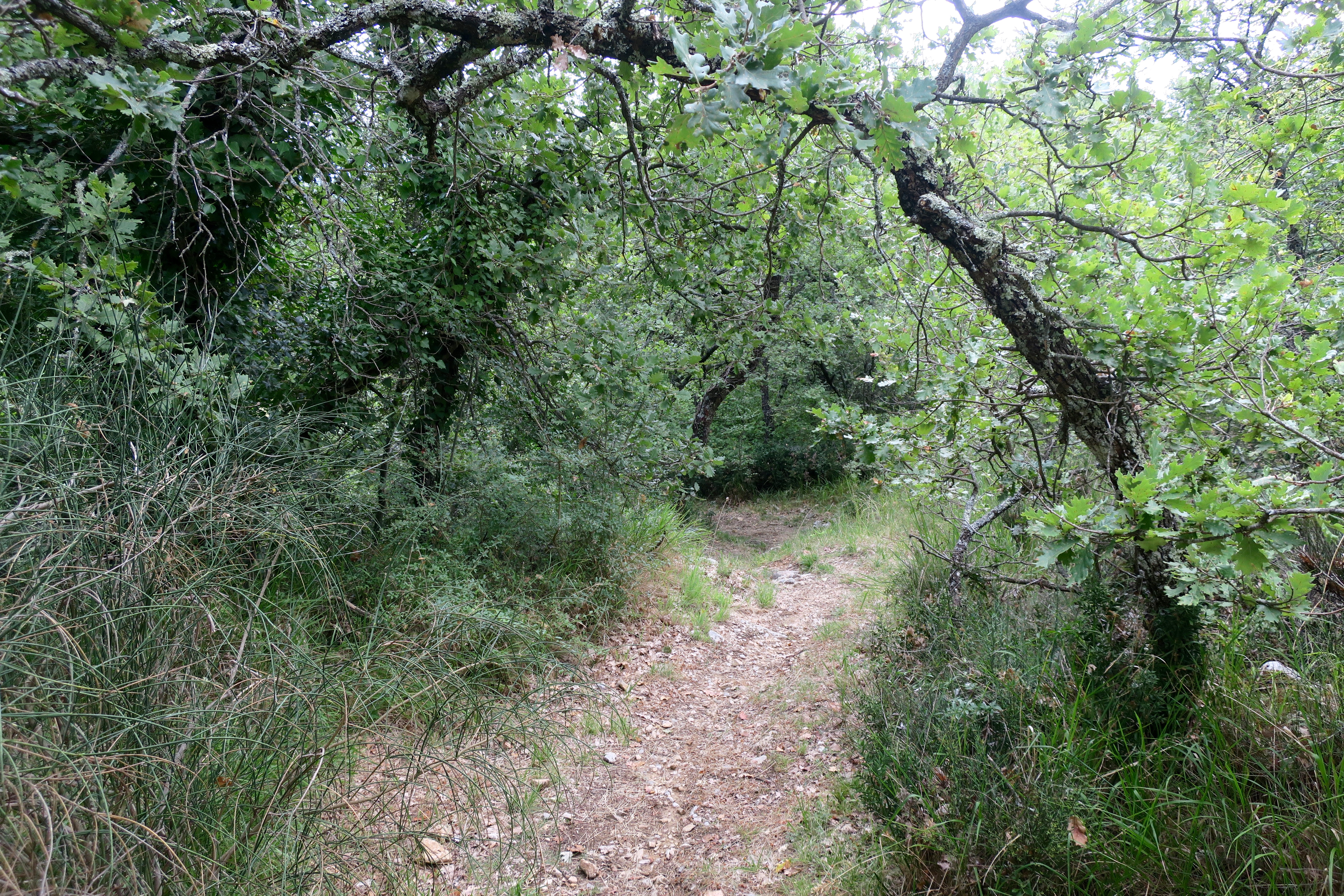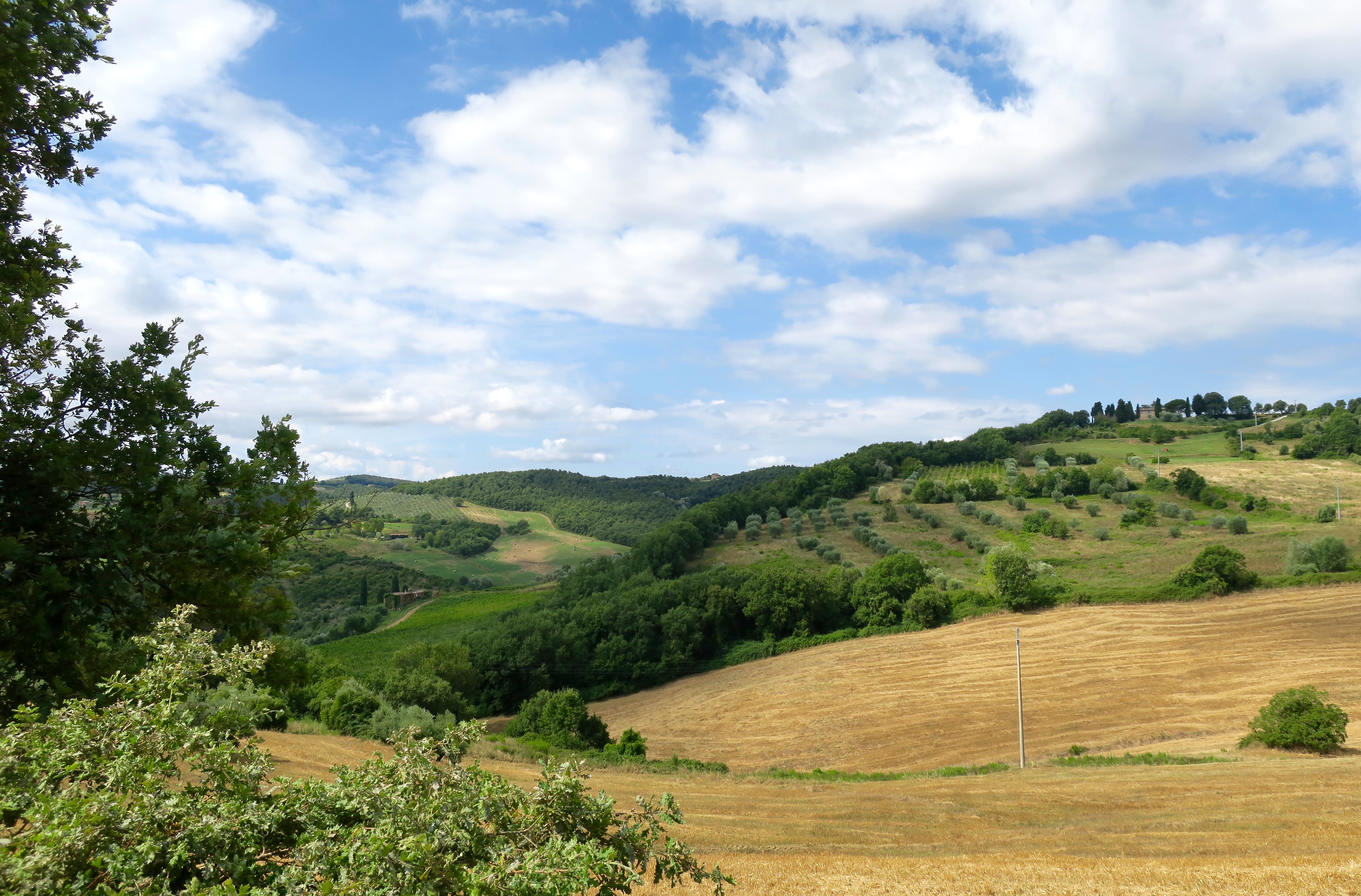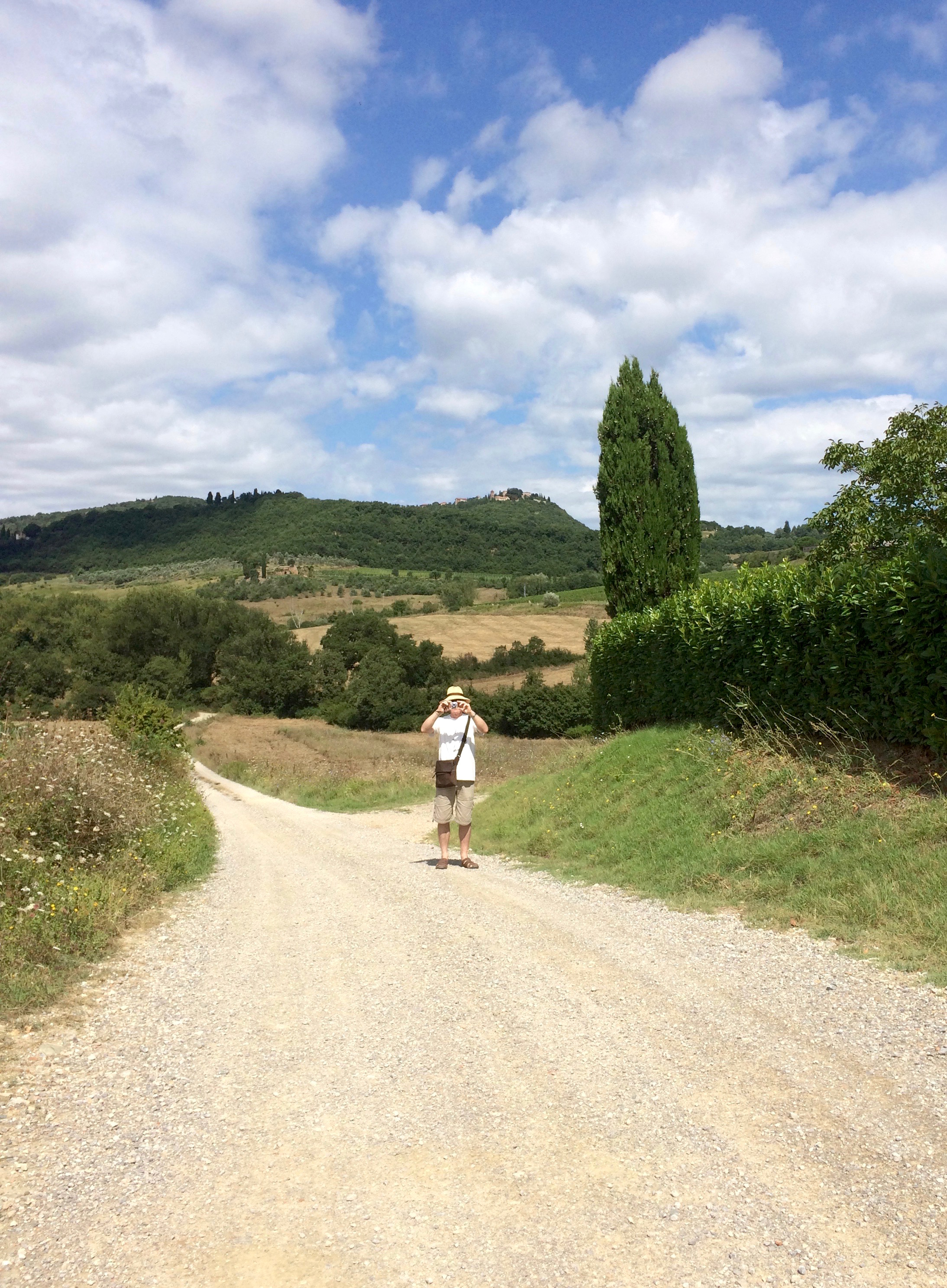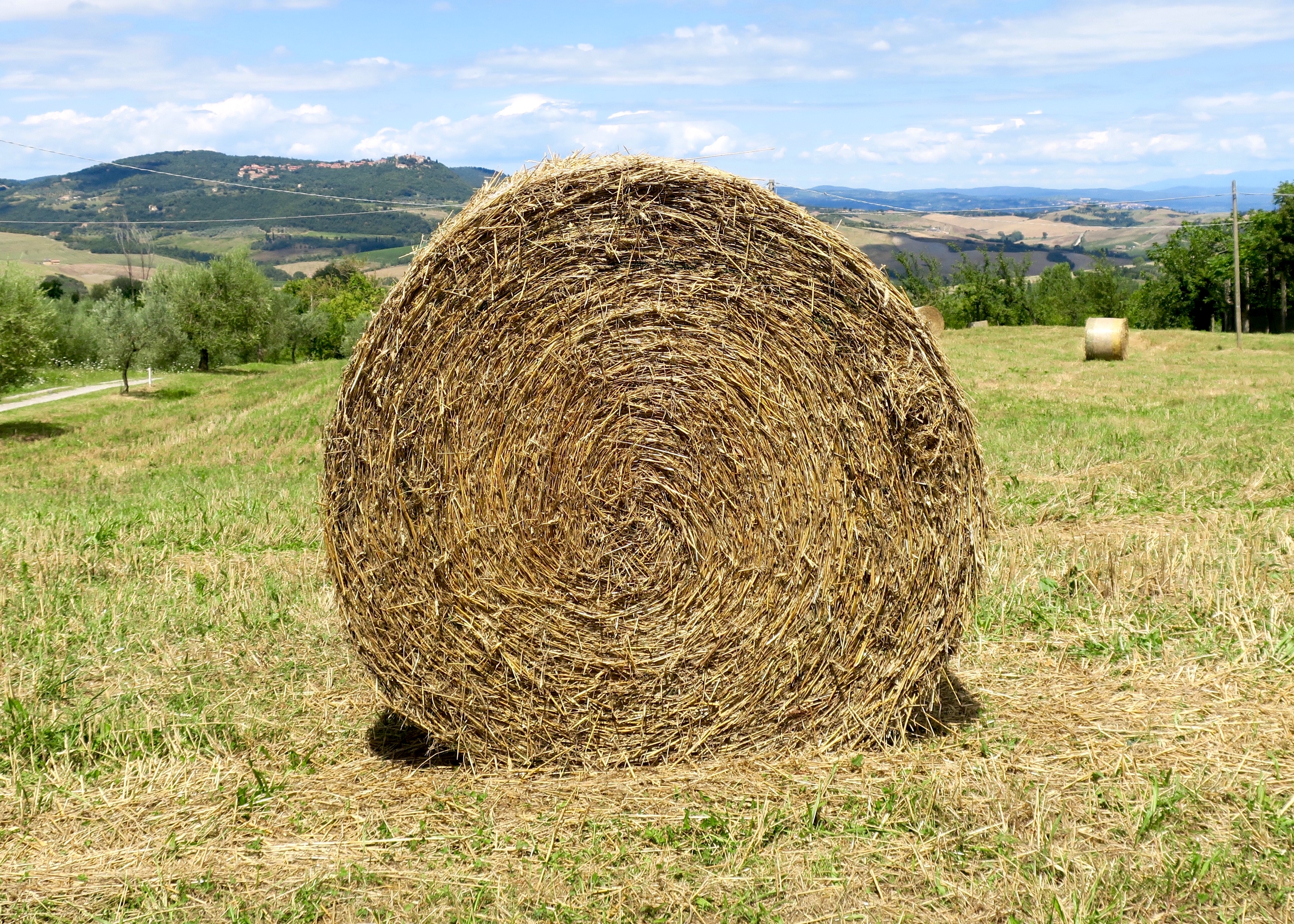It was a circular walk, there and around and back again, but I got carried away with the camera and took far too many photos, so it might seem we were gone for three days instead of just the one. We were staying in Montefollonico – this quiet fortified village, with its small medieval houses, is Sienese in atmosphere, and inhabited by numerous doves and pigeons – and from our terrace we could see the birds come home to roost each day, across the valley from Montepulciano.
Porta del Triano, bearing the date 1278, frames a view of Montepulciano on the skyline.
I made a drawing at this gate almost every day, and it was different every time.
Through the gate, a spectacular panorama with Montepulciano silhouetted on the horizon.
A cat ran in front of us and fell at our feet, demanding attention,
then ran off and brought us to this curious elephant-shaped rock.
Just below is the handsome Chiesa del Triano, built on rocks in a group of horse chestnut trees, with a lovely view of Monte Amiata. Its architectural features in brick and stone stand out against the white ‘intonaco’. It has a pretty domed bell-tower. The date 1609 is above the door. The interior has an attractive crossing with an unusual altar screen.
Blue Guide Tuscany: Alta Macadam
We’d picked up a leaflet from Tourist Information in Montefollonico…
Walking to Montepulciano: Leaving from Tourist Office, go towards the bar (we called in for macchiati). From here go down to the Triano Church, taking the gravel road. Once you get to the church, pass by the front door and take the path on the right, down to the tar road. Carry on this tar road for approximately 500 meters, until a small church (St. Anna). Here turn right onto a gravel road. After about 1km, and at the bottom of the hill, you will find the abandoned farm house Pozzarello. Passing the farmhouse on your left and continuing for approximately 100 meters turn left and carry on going down until you get to a stream. Cross the stream and turn left, following the road up to Montepulciano. Once you arrive to the tar road you could chose to turn right to to to visit the beautiful San Biagio church, or turn left to get to the centre of Montepulciano. To get to the centre, once you turned left, proceed for about 600 meters, when, right after the green house, you will find a path on your right. Turn right onto the path and going up and you will reach a parking area. Here turn left and after few meters you will find Montepulciano Tourist Office. Turning to the right you will be in the centre of Montepulciano. Distance: 7km. Time: 3 hours. Difficulty: Medium.
…and then the path just unrolled before us.
Behind us, the view back to Montefollonico on top of the hill.
The chapel of Sant’Anna, a satellite of the Chiesa del Triano.
We left the road and followed a dirt track down from the chapel to where a flock of sheep waited in the shade of a holm oak tree. The Italian word for sheep is pecora, and their milk goes to make Pecorino cheese, known locally as Pecorino di Pienza and said to be the best in Tuscany.
We came along the lane, by views of harvested hayfields and olive groves, vistas of rolling countryside eagerly embraced with wide-open eyes, through the welcome shade of a green tunnel, to a ruined farmhouse and a thriving vineyard, then a steep track into the valley of a dried up stream, feasting on hedgerow blackberries as we go, down to a painted sign pointing us back to Montefollonico.
The signpost confirmed where we’d come from but it didn’t say where we were going to.
On the hill ahead of us was Montepulciano.
On the hill behind us stood Montefollonico.
We continued ahead.
We approached the noble vines of Montepulciano on the stroke of noon, just as every bell in the town began to ring, welcoming our arrival. The distinctive outline of San Biagio can be seen to the right, outside the walls and below the town. It is one of the great church buildings of the High Renaissance.
San Biagio, Montepulciano: Paul Finn
Our path led us through more vineyards and lush farmlands, where chickens and ponies grazed under fruit trees, protected by honking guard geese, to emerge onto the Via dei Canneti. After a steep climb, stopping only to refill our bottles at the public water dispenser, we finally arrived at the Porta al Prato.
※
Montepulciano / Walking Back To Montefollonico









































Love the drawings – can we see more of them?
Thanks Hedy, it’s been a while since I did any drawing. I must get more practice. Did you see the drawings In Pienza? As an architect you might find them interesting. I hope you’re well.
Very fond memories of being there on a number of occasions Chris. They have the happiest priests in Italy apparently, not just because of the vino nobile but because the vino santo is fantastic too.
Thank you also for the mention in the blog. Great drawings by the way.
So many of these views seemed familiar because of your paintings! I enjoyed drawing but I’ve a way to go to catch up with you.
I LOVE your drawings too! photographs, fine lines and text – great combination. SX
Thanks for the encouraging words Susie. I will draw more. I will draw more. I will.
We wondered about Sicily next time. Any recommendations? Are there trees?
Dad I love the drawings! Where are you hiding them, how come I haven’t seen them in real life?? Surely you should frame them..? Lovely photos too x
Maura thank you! You can look at my sketchbook anytime but I don’t think I’ll be tearing any pages out.